How to improve clay soil for gardening – 10 expert-approved ways to boost your garden's health and help plants thrive
Learn how to improve clay soil for gardening and improve your garden's health and productivity
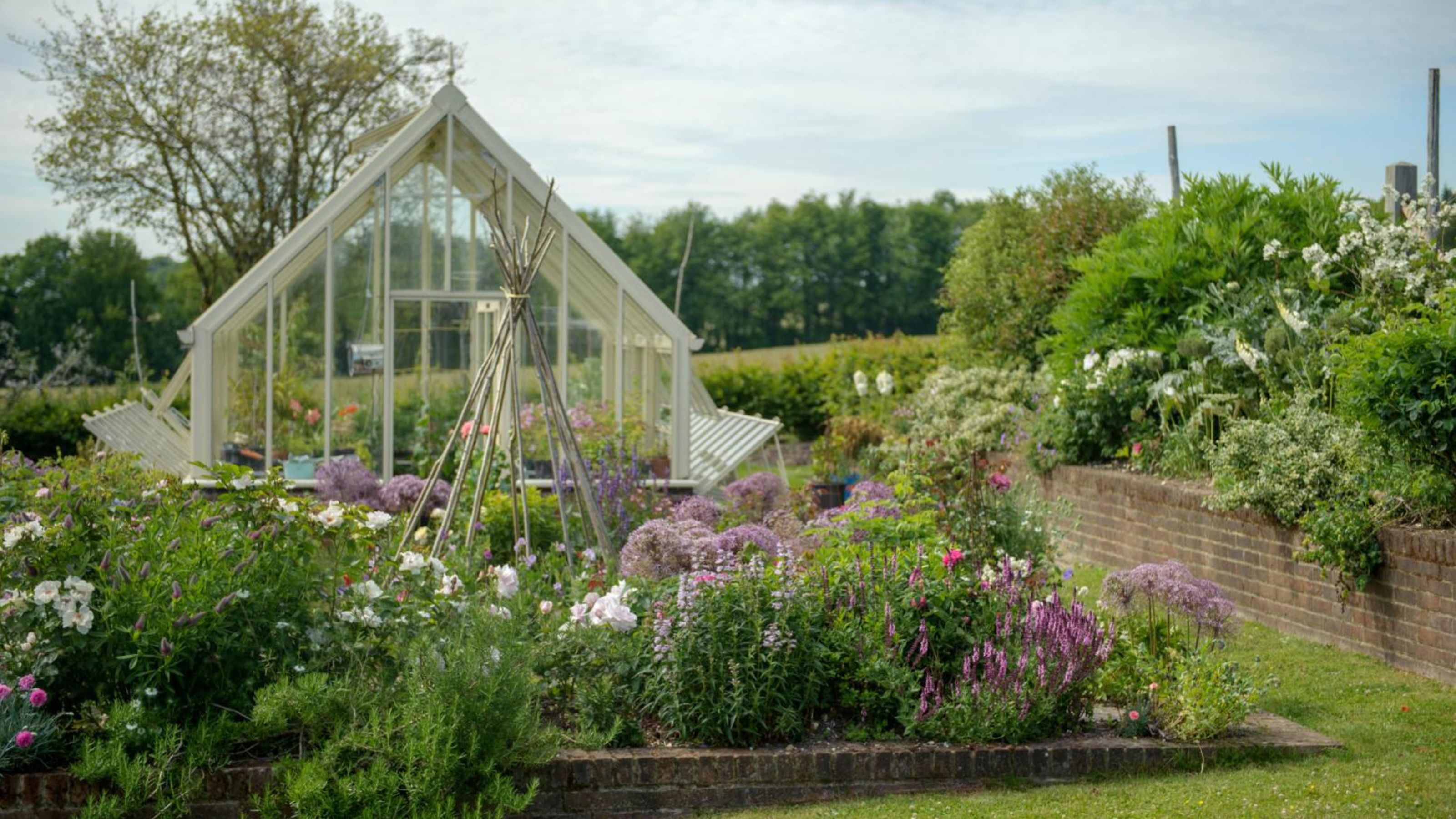

Jenny McFarlane
Learning how to improve clay soil for gardening will increase the health of your flowers and the yields of your crops.
Transforming it into a thriving garden bed takes patience, but the results are well worth the effort. And thankfully, it's not as difficult as it appears – there are short-term labour-intensive methods and more long-term but low-effort techniques, meaning you can choose the right approach for your garden ideas.
By incorporating plenty of organic matter and choosing the right plants, you can create a rich, workable soil that supports healthy growth year after year.
The first step in improving clay soil for gardening is to confirm that you have clay soil. This is very easy to do – with no need for specialist tools.
'Take a handful of soil and squeeze it your fist. If the soil remains in a tight ball and is an orange-brown colour, you have quite heavy clay soil. This tends to stay wet in winter and bake hard in the summer,' explains landscape gardener Paul-Hervey Brookes.
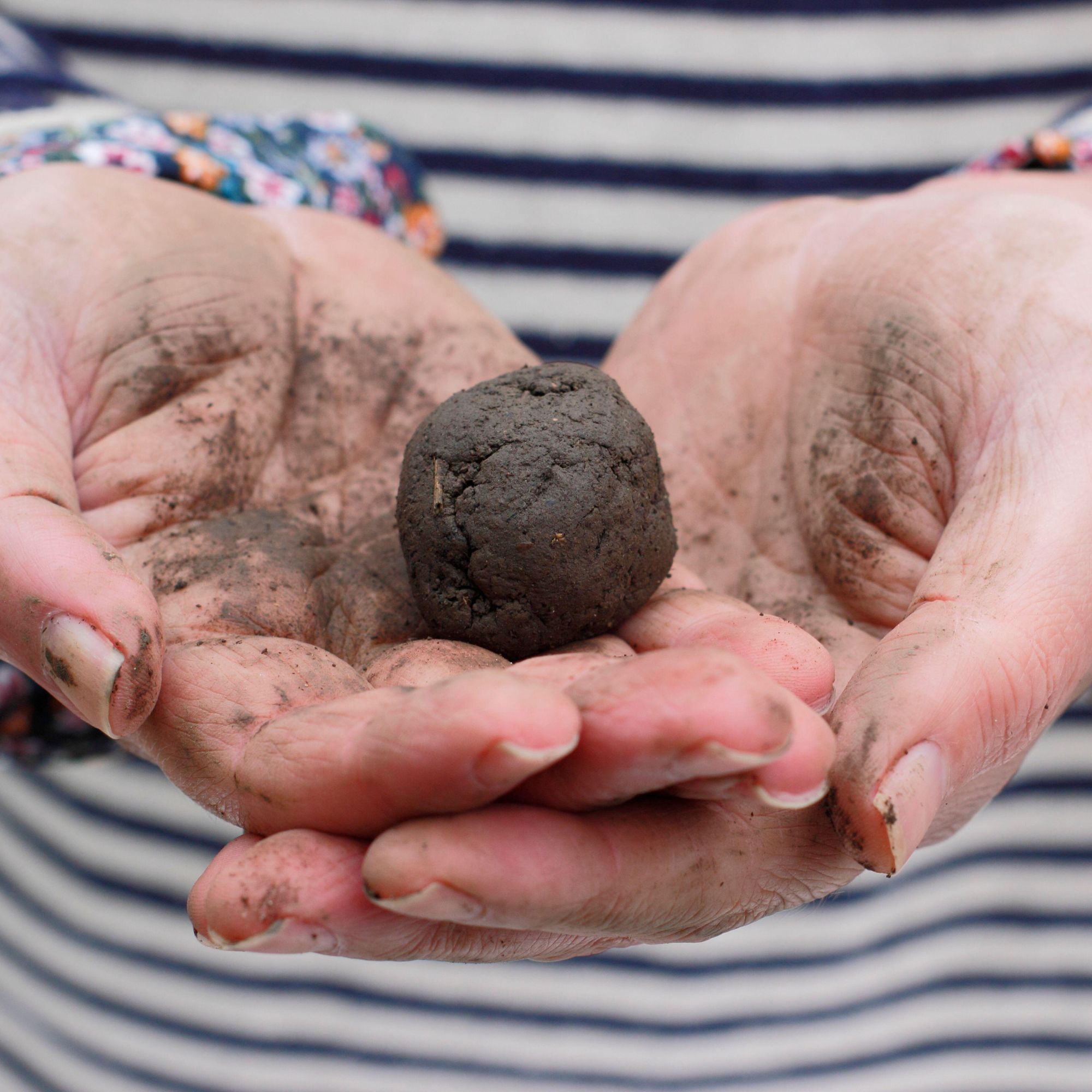
Clay soils have a bad reputation as they can quickly make gardens waterlogged during winter and dry out to an almost concrete consistency during summer, making it hard to grow some plants.
However, once you know how to improve clay soil, you'll be rewarded with an excellent growing medium.
'Clay can hold water and nutrients tightly due to its fine particles and high plasticity,' explains Julian Palphramand, Head of Plants at British Garden Centres. This means it can be very fertile and is one of the best soil types for resisting drought.
1. Add organic matter
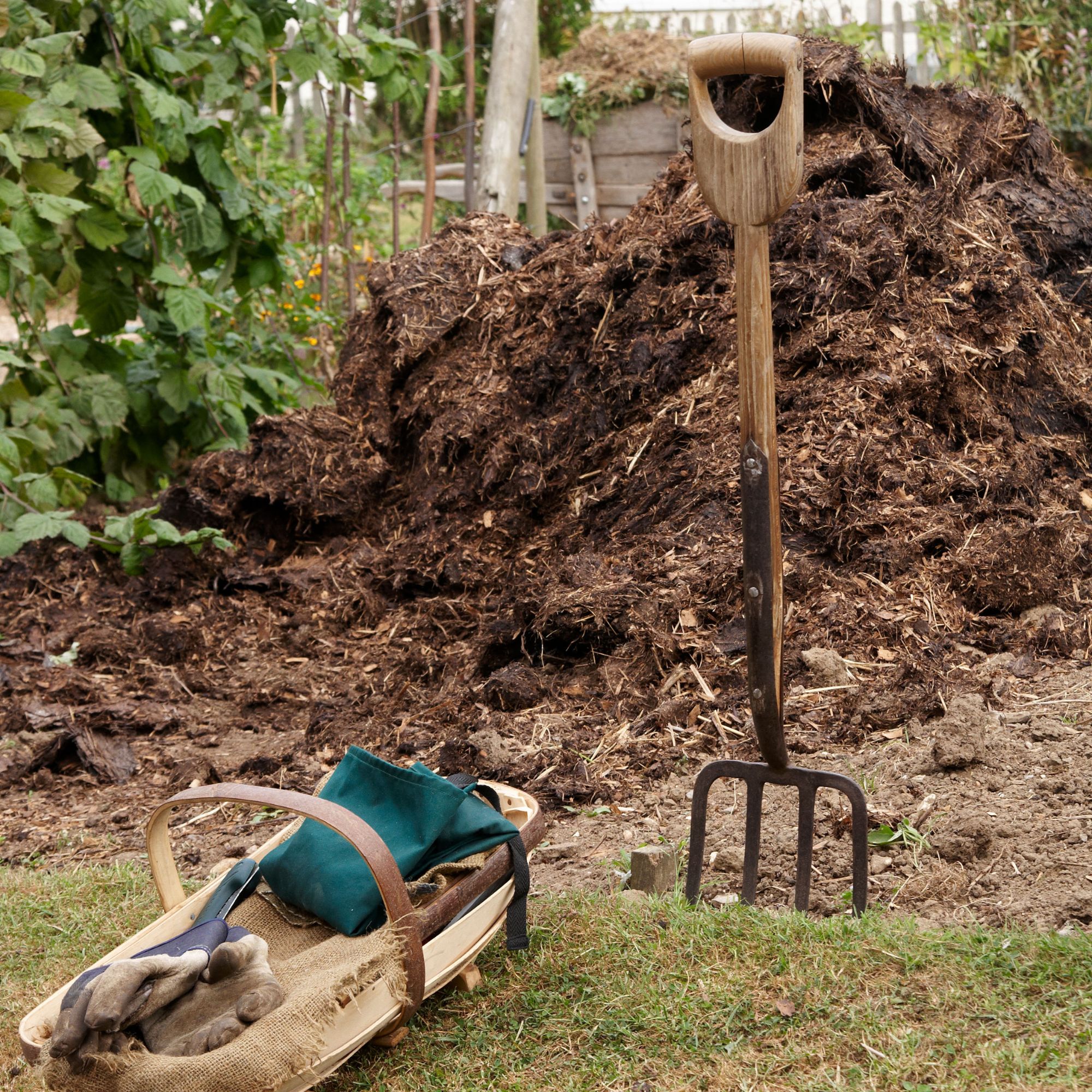
'The simplest way to improve clay soil for gardening is to incorporate bulky organic matter such as compost or farmyard manure, as well as some sand and grit,' advises Julian Palphramand, head of plants at British Garden Centres. 'This will improve soil fertility, aeration, drainage, and moisture retention.'
Aim to apply around 5kg per square metre and work into the soil by digging. This is labour-intensive but you will quickly see the results.
'Regularly adding organic matter helps create a thriving, balanced environment for plants to grow,' adds Angharad James, product manager at Maxicrop.
2. Mulching
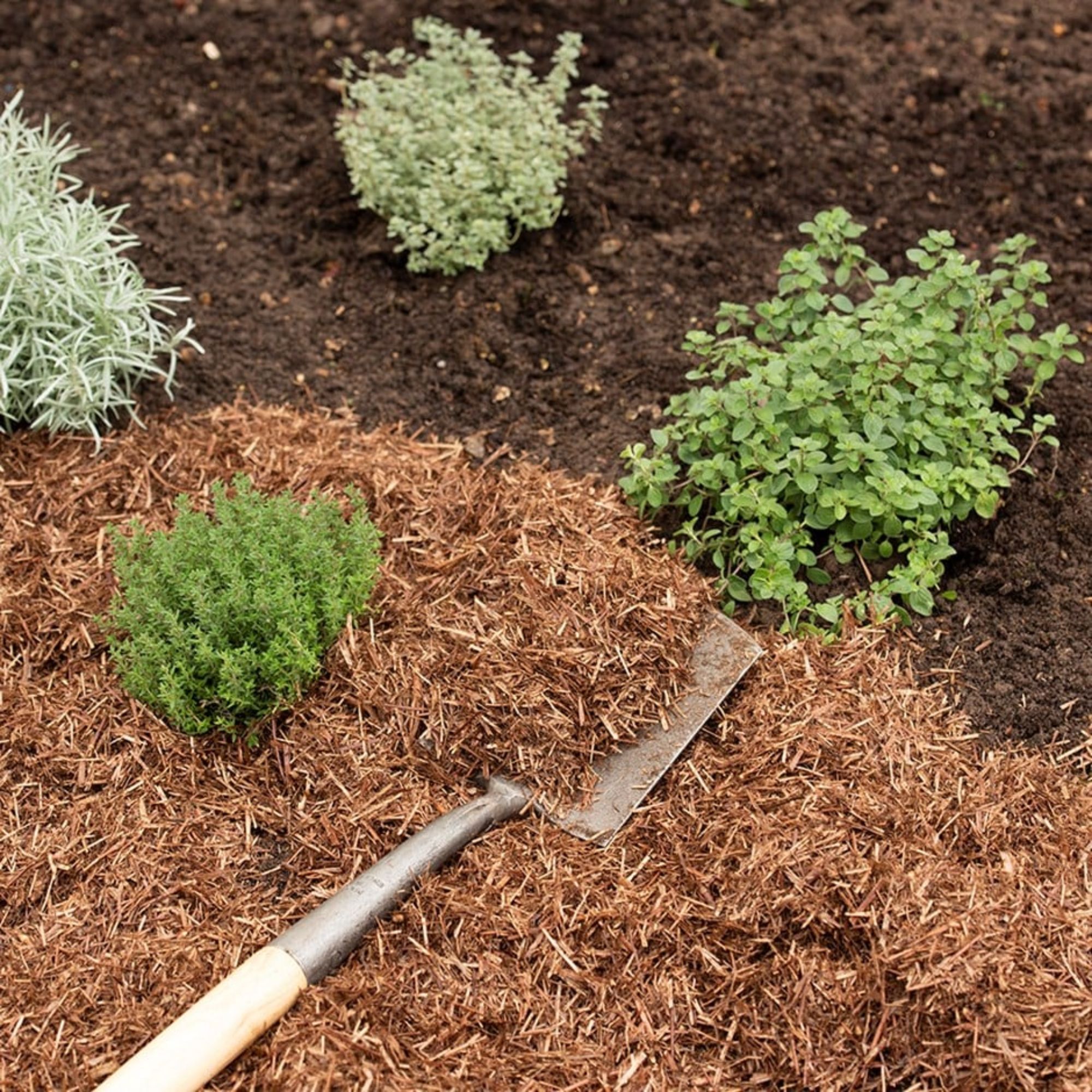
Mulching with bark chips or even a thick layer of straw or grass clippings will prove very beneficial to improve clay soil for gardening – especially if used in conjunction with other methods.
In the short term, the mulch will help the soil retain moisture, preventing the clay from drying out, becoming hard and cracking. Secondly, as the mulch decays, it will help break down the clay further.
'Mulching is another simple yet powerful way to protect and nourish your soil. Organic mulches like wood chips, straw or bark help retain moisture, regulate temperature, and suppress weeds, explains Angharad. 'Over time, they break down and release nutrients back into the soil, further enhancing its health.'
An added benefit of mulch is that it can serve as a barrier to get rid of slugs, too. If you're improving clay soil with mulch in your vegetable garden, we've highlighted the best type to use.

With nearly a decade of experience in the horticultural industry, Angharad knows how to help gardeners get the most out of their efforts to produce beautiful blooms and bumper crops. A product manager for Maxicrop at SBM Life Science, Angharad specialises in organic growing. She believes that harnessing the natural power of seaweed is the secret to success when it comes to the garden – whether you’re nurturing fruit and veg, flowers, shrubs, or even the lawn. When she’s not shouting about the magic of Maxicrop, you’ll find Angharad pottering about her own garden and tending to her plants.
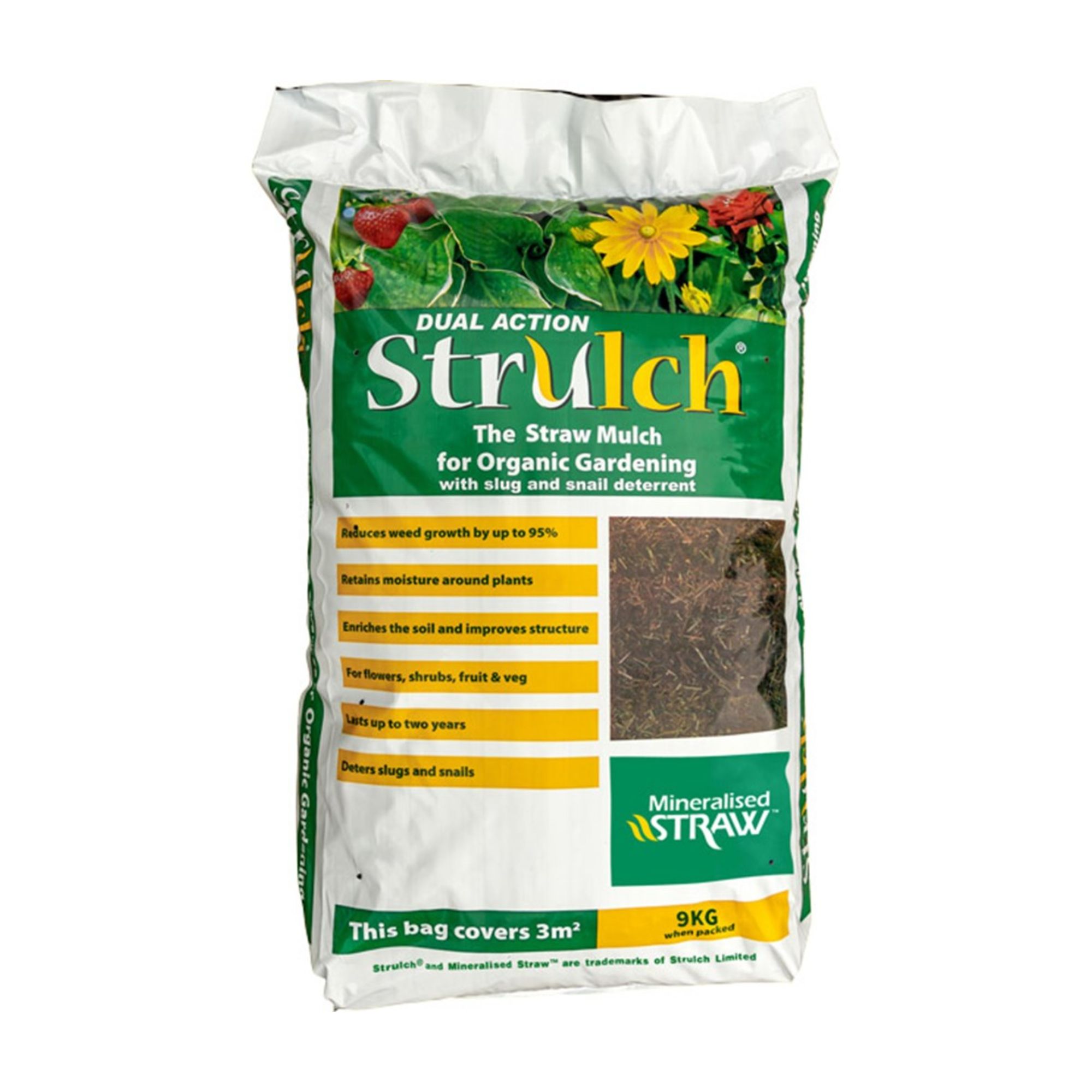
A mineralised straw mulch that improves clay soil for gardening as well as reducing the need for watering and weeding.
3. Grow green manure
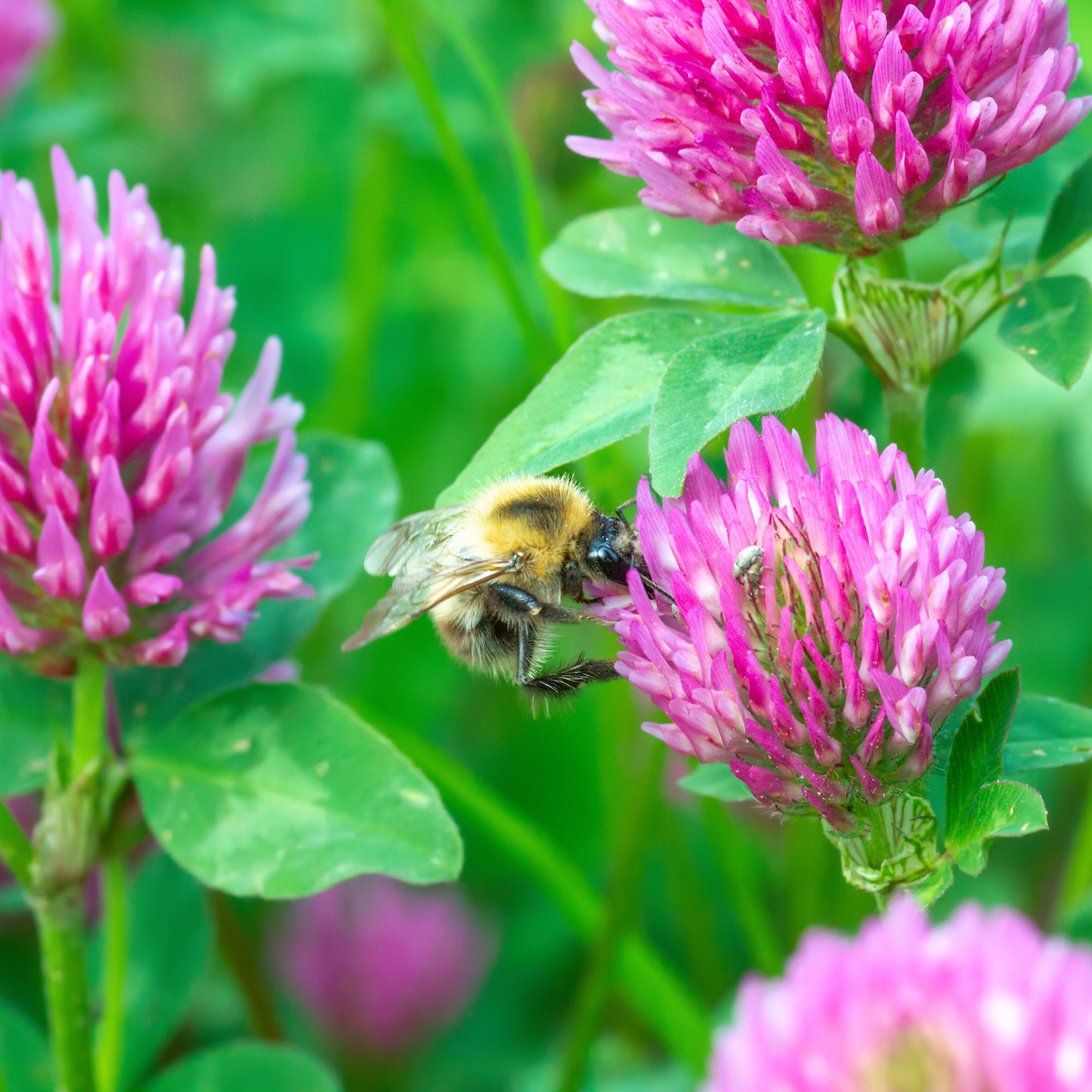
If you want a low-effort approach to breaking up clay soil, try growing green manure. 'Green manure is a crop that is grown mainly to benefit the soil rather than for food or ornament,' explains experts at greenmanure.co.uk.
Green manures (you can pick up a mix on Amazon) that are particularly suited to improve clay soil for gardening include Field Beans, Red Clover from Marshall's and Forage Rye from Dobies. These are planted in early autumn, allowed to grow and work their magic over winter and are then cut down before flowering, being dug into the soil or left as mulch.
Green manure also has the added benefit of providing food and habitats for pollinators, making it a great addition to wildlife garden ideas too.
4. Use a clay breaker

Commercially available clay breakers (like from B&Q) are – for the most part – comprised of horticultural gypsum and will break up the heavy clay particles.
'To use, dig the soil over roughly and apply 200g per square metre. Leave for one month after application, before re-working the soil,' says Nick Worthington from Vitax Garden World.
'Autumn is by far the best time to work an area as it maximises the surface area exposed to frost, airflow and some moisture which all help break the clay up.'
Clay breaker can also be used as an autumn top dressing on lawns to improve drainage in a clay soil lawn.
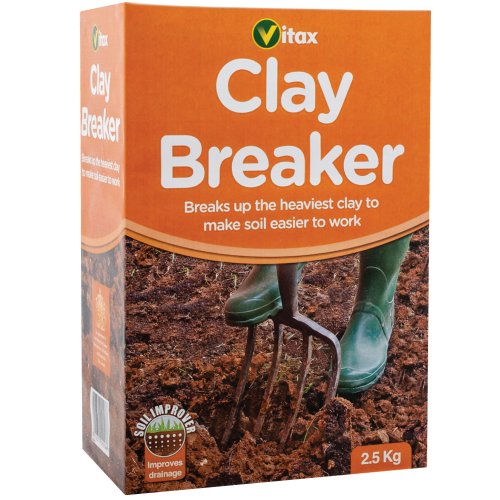
Work into soil to improve drainage and break up heavy clay particles. It is best used in autumn.
5. Plant potatoes, turnips or beetroot

Plants with tuberous roots – such as potatoes, turnips and beetroot – are a great way to improve clay soil for gardening as their large roots grow into and break up the clay.
Plus they reward you with a delicious crop at the end of the season. Learn how to grow potatoes or how to grow beetroot for the greatest chance of success.
6. Fertiliser with wood ash
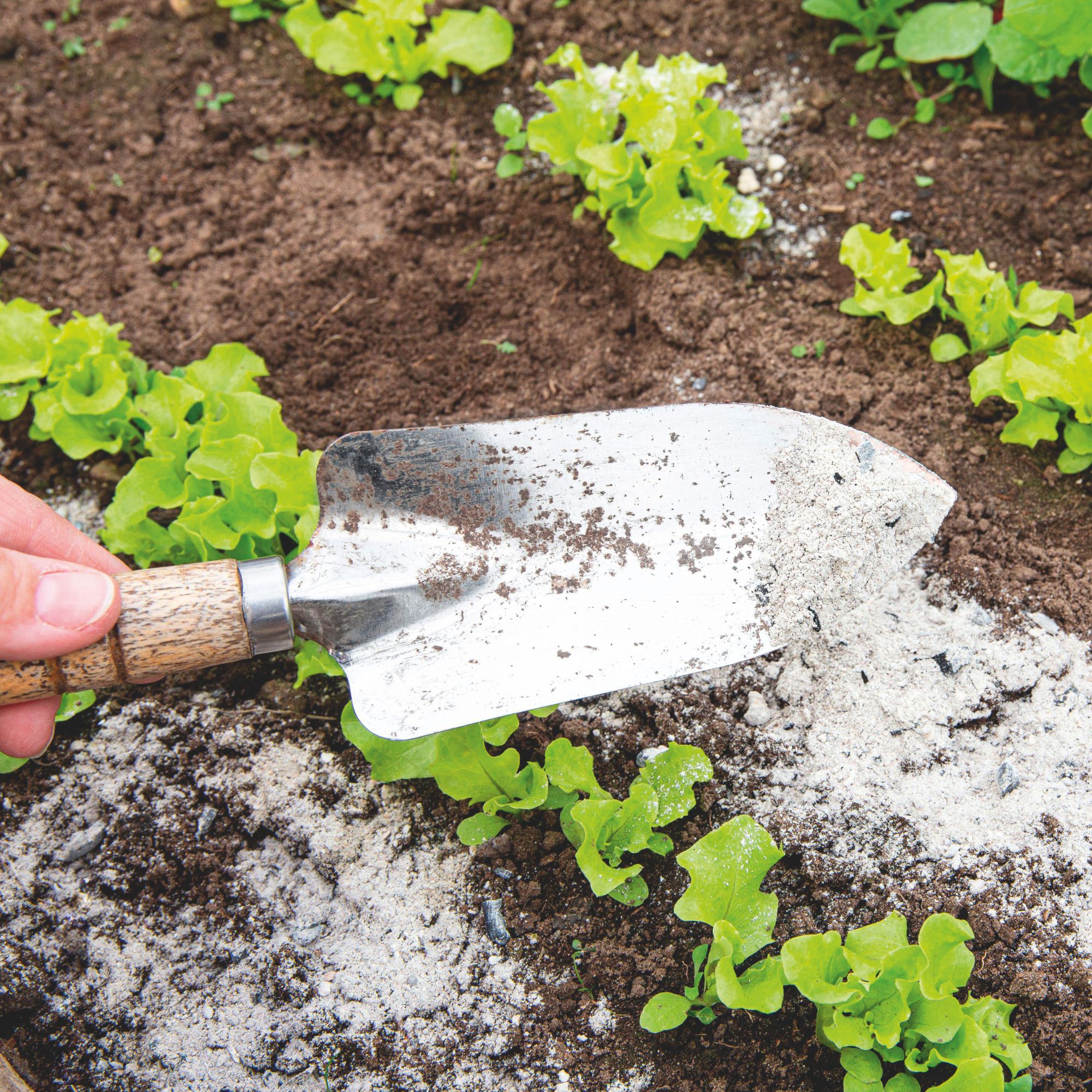
Wood ash is a great fertiliser – high in potassium, phosphorus, and magnesium. However, it is also good for breaking up heavy clay soil. You can use it as a top dressing or dig into the soil.
If you've invested in firepit ideas, then you'll be excited to learn that you can use fire pit ash in the garden as a free way to improve clay soil for gardening. However, it's worth noting that using wood ash will quickly raise the pH of the soil so shouldn't be used around acid-loving plants
7. Break up the soil with grit

'For heavy, clay soil dig in some horticultural grit – such as Westland's Potting Grit from Amazon – to improve drainage,' advises Jekka McVicar VMH of Jekka’s Herb Farm. Add the grit to the soil and turn it over. The grit particles then create air holes in the soil so that water can be absorbed more easily.
Horticultural sand is also useful if you're hoping to plant bulbs in clay soil. 'Add horticultural sand at the bottom of the planting hole. If you have lots of bulbs, work the soil beforehand and use a bulb planter,' advises garden expert Leigh Clapp.
8. Start using seaweed
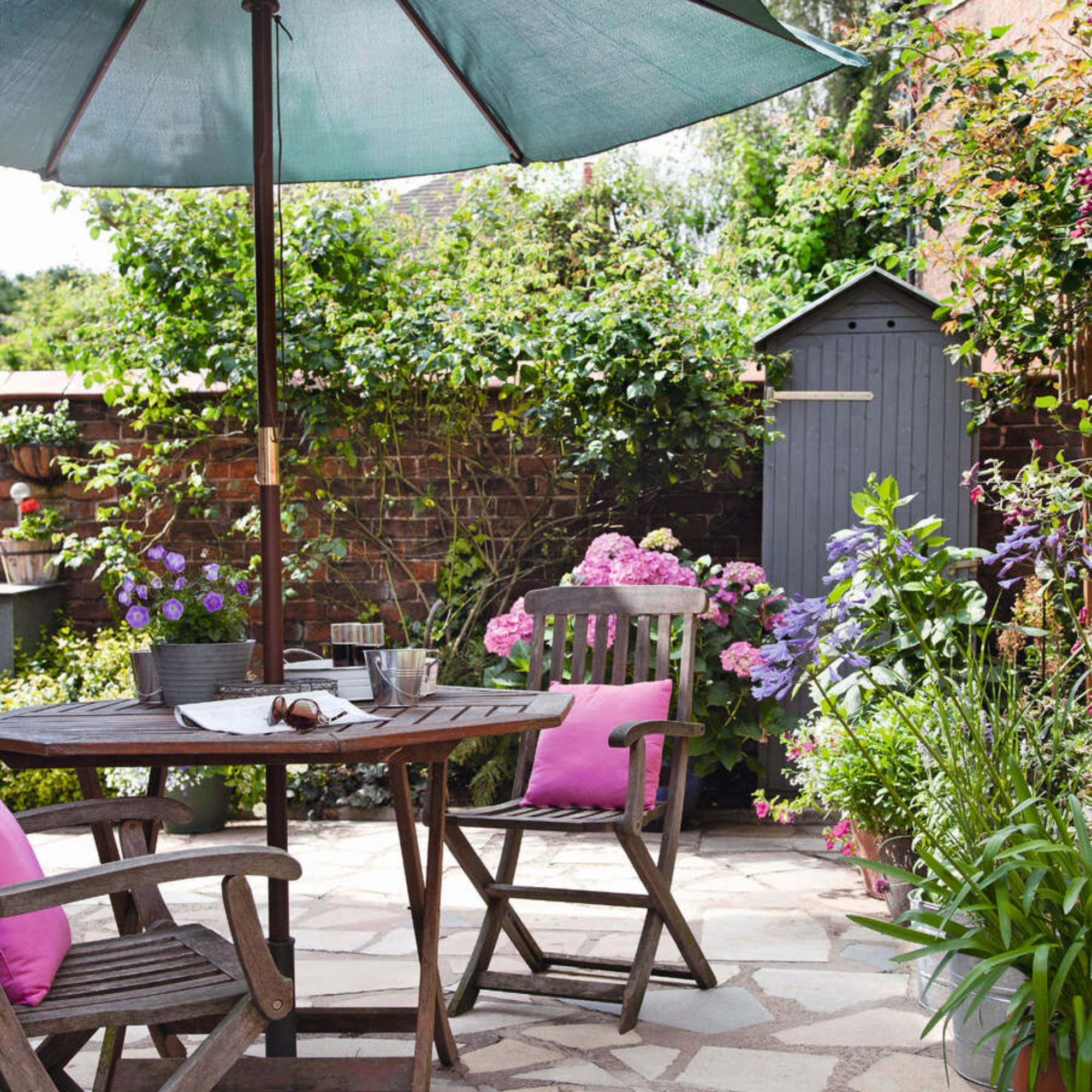
Known for its rich mix of minerals and trace elements, Angharad James, product manager at Maxicro says seaweed works wonders in improving both drainage and structure of your clay soil without the need for chemicals.
'Adding natural soil amendments can also work wonders. Seaweed-based products like Maxicrop’s All Purpose Growth Stimulant (which you can pick up at Amazon) are an excellent way to restore and maintain soil health.'
'This natural stimulant improves root development, making it easier for plants to absorb essential nutrients from the soil. Whether you’re growing flowers, shrubs, trees, fruits, vegetables or maintaining a lawn, Maxicrop helps ensure that your plants have a healthy foundation. It stimulates natural growth processes, making sure that plants get the nutrients they need to grow strong and resilient.'
'Simply mix 45ml of the stimulant into 9 litres of water and apply it directly to your plants every seven to 14 days. As an organic-approved product, it’s safe for both your garden and the environment.'
9. Rotate your crops
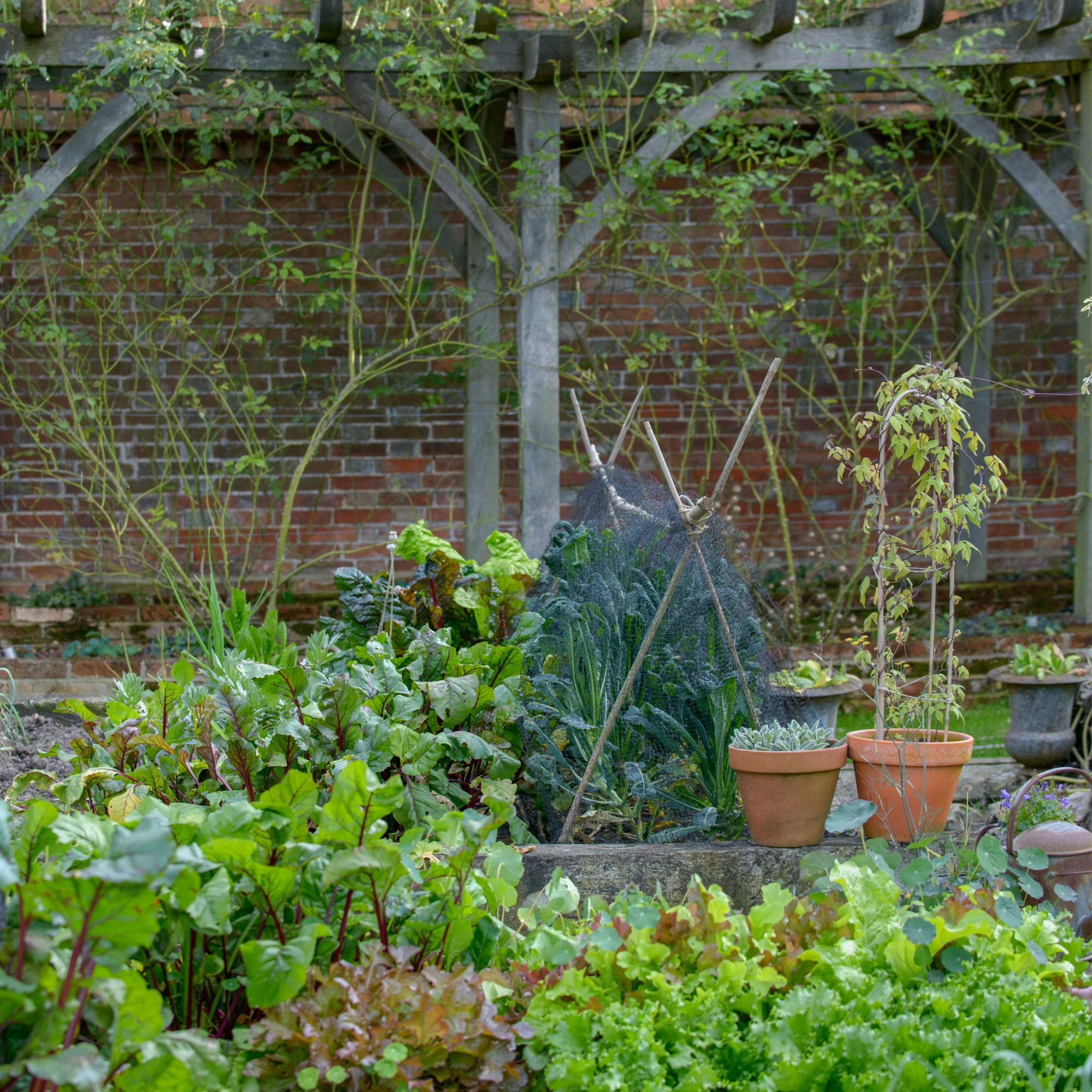
One of the simplest, most natural ways to improve clay soil is by rotating crops. Choosing what you grow and when, will not only break up compacted ground but also steadily enrich the soil, as Angharad explains.
'If you grow vegetables, consider rotating your crops each season. Crop rotation prevents the depletion of specific nutrients and reduces the risk of soil-borne diseases, keeping your soil healthier in the long run.'

James Ewens is Commercial Director of Green Feathers, bird box camera and garden wildlife specialists, and is a self-proclaimed garden enthusiast. James is passionate about all things nature, garden, and wildlife, and when he’s not tending to his own outdoor space he’s usually checking on his bird and hedgehog cameras.
10. Aerate clay soil
'Aerating your clay soil can be beneficial, as it can help reduce compaction and improve drainage. To do this you’ll need an aerator or garden fork to create holes in the soil; this will allow water, air and essential nutrients to reach the roots better,' explains James Ewens, gardening expert at Green Feathers.
'But, you’ll need to do this carefully, as too much aeration can disturb the structure of the soil. Choose the right time of year to aerate; ideally during the growing season when your soil will still be moist but not overly wet, and follow up by adding organic matter to give the soil health a boost.'

Graham Smith MCIhort is the gardening expert at LBS Horticulture. He has extensive knowledge in the horticultural and gardening industries, and prides himself on using this to help gardeners of all skills create their perfect outdoor space.
FAQs
What should you not to add to clay soil?
We asked gardening experts what you shouldn't add to clay soil.
'You should not add sand to clay soil, as it can make drainage and compaction issues worse. Adding sand to clay soil can create a concrete-like consistency, so you should only use compost or other organic matter,' explains Graham Smith MCIHort, a gardening expert from LBS Horticulture.
“Adding sawdust or fresh wood chips can release nitrogen into the surrounding soil as they break down, and potentially deprive nearby plants of the nutrients they need to grow and thrive, adds James Ewens, gardening expert at Green Feathers.
'You should also avoid large amounts of salt and chemicals, and these can throw the soil health way off balance and damage the plant roots.'
'Instead of the above, focus on adding organic matter like well-rotted manure and compost to improve the structure and fertility of the soil.'
Can I put gravel on top of clay soil?
James Ewens, gardening expert at Green Feathers says 'You can, but it won’t necessarily improve the drainage of your soil as much as you hope.'
'Adding gravel can create another layer that stops water from penetrating deep into the soil, potentially exacerbating your garden’s drainage issues.'
'A better method would be to mix coarse sand or gravel directly into the soil in order to improve its structure. If you’re thinking of using gravel as more of a decorative technique or a surface cover, make sure the soil underneath has proper drainage,' suggests James.
How to get rid of standing water in clay soil?
'There are several ways in which you can improve the drainage of clay soil to get rid of standing water,' explains Graham Smith MCIHort, gardening expert at LBS Horticulture.
- Aerate compacted soil – 'Use a garden fork to poke holes in the soil, as this will allow rainwater to flow down into the ground instead of pooling on the soil surface. You will need to wait for standing water to drain away before doing this, and it can be swept away if there is only a small amount.'
- Install a drainage system – 'Installing a drainage system such as a soakaway, a ditch or channel drainage can help direct the flow of water.'
What plants are good for clay soil?
Look for flood proof plants or those that enjoy moist environments. These include:
- Rubeckia
- Echinacea
- Hostas
- Foxgloves
- Geranium
- Hydrangea
- Buddleia
- Anemone
- Sedum
- Viburum
- Roses
- Hellebores
So, there you have it: How to improve clay soil.
Graham Smith, garden expert at LBS Horticulture sums up the best products to add to clay soil:
'The best materials to add to clay soil are organic compost, bark chips, composted leaves or gypsum, as these can improve soil structure and alleviate compaction problems.'
And, if clay isn't your problem, you could test your soil for nutrient deficiencies and learn how to fix it.
Get the Ideal Home Newsletter
Sign up to our newsletter for style and decor inspiration, house makeovers, project advice and more.

Holly is one of Ideal Home’s content editors. Starting her career in 2018 as a feature writer and sub-editor for Period Living magazine, she has continued this role also adding regular features for Country Homes & Interiors and the Ideal Home website to her roster. Holly has a passion for traditional and country-inspired interiors – especially kitchen design – and is happiest when exploring the countryside and hills of the Lake District. A keen gardener, she is a strong believer that you can never have too many houseplants.
- Jenny McFarlaneSenior Digital Editor
You must confirm your public display name before commenting
Please logout and then login again, you will then be prompted to enter your display name.
-
 My go-to Ninja coffee machine is on sale for Easter weekend
My go-to Ninja coffee machine is on sale for Easter weekendIt makes coffee shop quality achievable at home
By Molly Cleary
-
 When to plant out annual flowering plants for vibrant, colourful garden borders – and give them the best start, according to experts
When to plant out annual flowering plants for vibrant, colourful garden borders – and give them the best start, according to expertsNot sure when to plant out annual flowering plants? We've got you covered...
By Kayleigh Dray
-
 I'm a kitchen decor editor and didn't like this tableware trend - until I saw H&M Home's designer-look plates
I'm a kitchen decor editor and didn't like this tableware trend - until I saw H&M Home's designer-look platesThey made it easy to justify a new crockery set
By Holly Cockburn